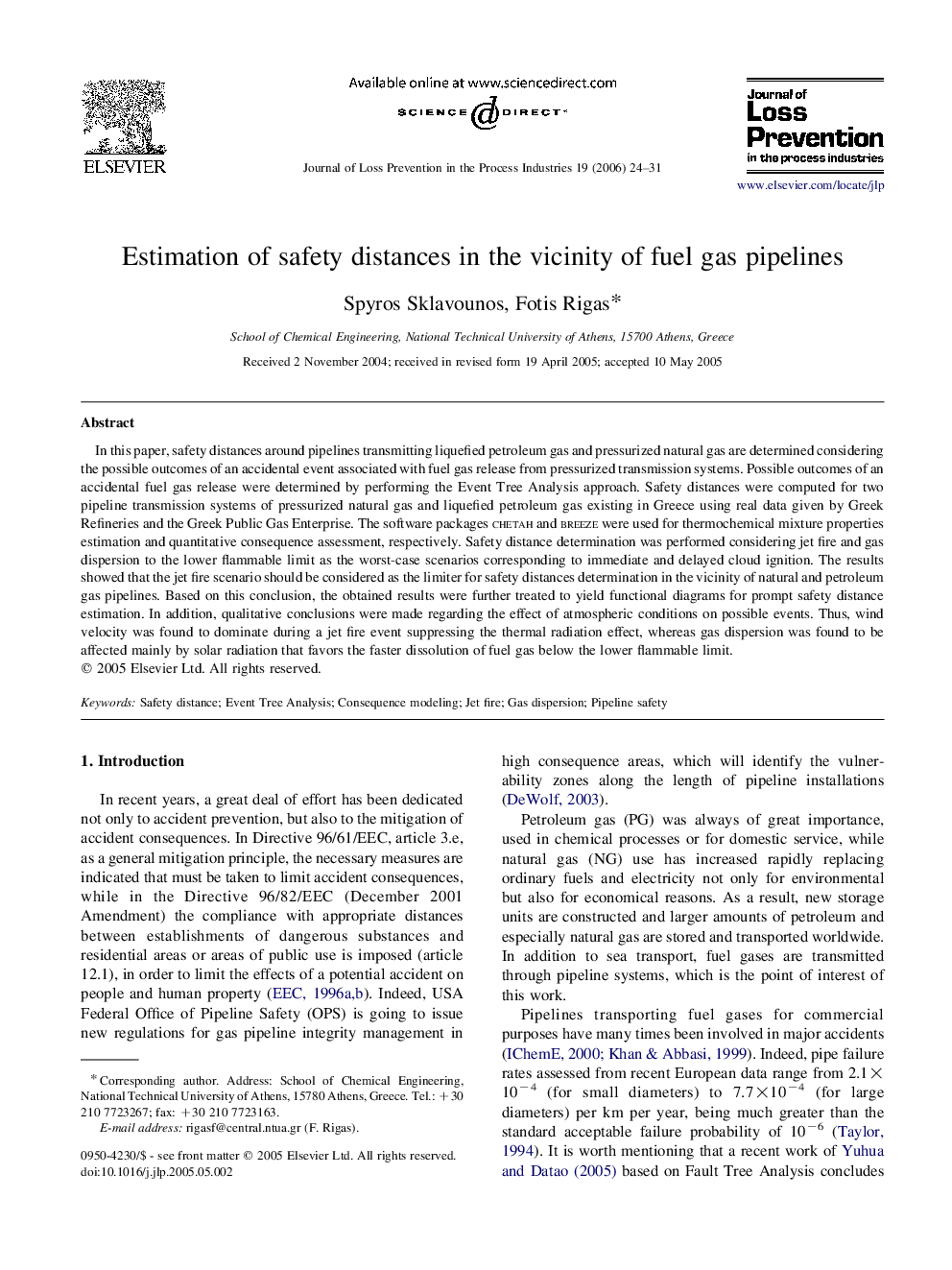| Article ID | Journal | Published Year | Pages | File Type |
|---|---|---|---|---|
| 586824 | Journal of Loss Prevention in the Process Industries | 2006 | 8 Pages |
In this paper, safety distances around pipelines transmitting liquefied petroleum gas and pressurized natural gas are determined considering the possible outcomes of an accidental event associated with fuel gas release from pressurized transmission systems. Possible outcomes of an accidental fuel gas release were determined by performing the Event Tree Analysis approach. Safety distances were computed for two pipeline transmission systems of pressurized natural gas and liquefied petroleum gas existing in Greece using real data given by Greek Refineries and the Greek Public Gas Enterprise. The software packages chetah and breeze were used for thermochemical mixture properties estimation and quantitative consequence assessment, respectively. Safety distance determination was performed considering jet fire and gas dispersion to the lower flammable limit as the worst-case scenarios corresponding to immediate and delayed cloud ignition. The results showed that the jet fire scenario should be considered as the limiter for safety distances determination in the vicinity of natural and petroleum gas pipelines. Based on this conclusion, the obtained results were further treated to yield functional diagrams for prompt safety distance estimation. In addition, qualitative conclusions were made regarding the effect of atmospheric conditions on possible events. Thus, wind velocity was found to dominate during a jet fire event suppressing the thermal radiation effect, whereas gas dispersion was found to be affected mainly by solar radiation that favors the faster dissolution of fuel gas below the lower flammable limit.
